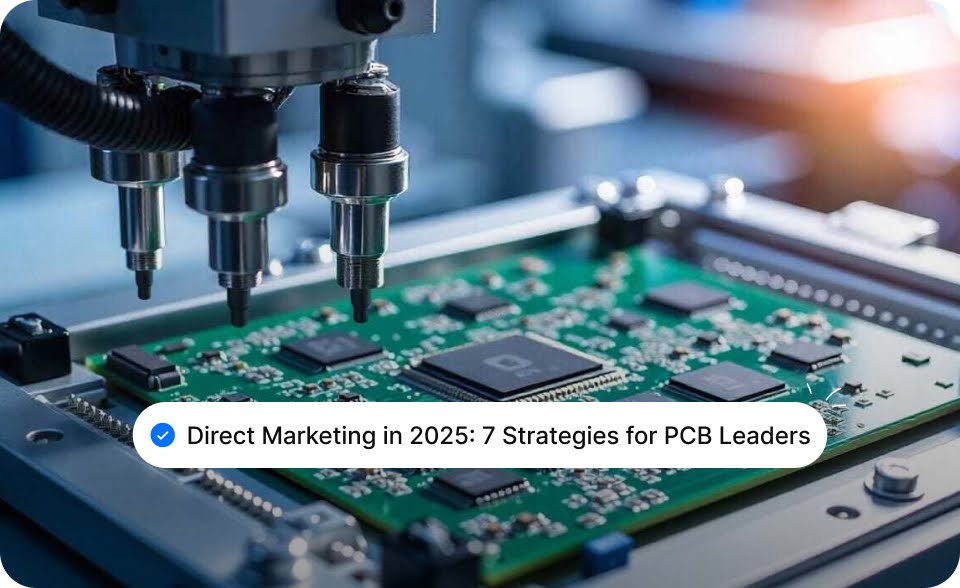Some days, the phone rings because a past client remembered your work. Other times, a neighbor recommends you after seeing your truck outside their home. Those moments still matter. But not every new project comes from word-of-mouth anymore.
Contractor marketing steps in to keep that momentum going, so you’re visible, credible, and ready when someone starts searching for help online. It bridges the gap between reputation and reach, helping you turn recognition into steady, reliable business.
This guide walks you through practical ways to make that happen, without complicated jargon or wasted effort.
1. Build a Website That Sells Your Services
Your website is often the first time someone meets your business. It should look professional, load quickly, and answer one question immediately: “Can this contractor help me?”
To make that happen:
- Keep navigation simple and mobile-friendly.
- Add clear service pages and customer testimonials.
- Include a “Get a Quote” or “Book a Call” button on every page.
In marketing terms, traffic refers to visitors who come to your site, while leads are those who contact you. A well-built site turns visitors into paying customers, quietly, every day.
2. Optimize Your Google Business Profile
Your Google Business Profile (GBP) is your online business card. When someone types “contractor near me,” it decides if your name shows up.

Make sure it includes:
- Correct name, address, and phone number (NAP)
- Business hours, services, and photos
- A steady flow of reviews and responses
Google rewards active profiles, so reply to every review and post updates regularly.
3. Use Local SEO to Attract Nearby Clients
Local SEO connects you to clients in your service area, people searching for help right now.

To strengthen your local visibility:
- Use keywords like “home renovation in Dallas” on your website.
- Keep your contact info consistent everywhere online.
- Add your location and services to your page titles and headings.
When marketers mention quality traffic, they mean visitors who are actually interested in hiring you, not random browsers. That’s the goal of local SEO.
4. Create Dedicated Landing Pages
If your homepage tries to cover everything, it converts nothing. Give each service its own page, “Roof Repair,” “Bathroom Remodeling,” or “Deck Installation.”
These focused pages help:
- Search engines understand your specialities
- Customers find answers faster
- You get more calls from people looking for that specific service
5. Run Google & Meta Ads the Right Way
Paid ads help you appear exactly when people need your service.
- Google Ads reach people searching for urgent jobs, “AC repair near me.”
- Meta Ads (Facebook and Instagram) target those planning ahead, like a kitchen renovation.
A balanced mix builds immediate leads and long-term visibility.
6. Add Tracking to Every Campaign
Running ads without tracking is like working without a measuring tape.
Tracking tools show:
- Which ads bring calls or form submissions
- Which keywords convert best
- Where your marketing money works hardest
This clarity lets you stop guessing and focus your budget on results.
7. Build Trust with Content Marketing
Homeowners do research before they decide. Sharing your knowledge positions you as a trusted pro.
Write short blogs or guides answering questions like:
- “How long does a bathroom remodel take?”
- “What’s the average cost of roofing in Texas?”
This kind of content builds familiarity. When they finally need help, they’ll remember who gave them real answers.
8. Use Videos to Showcase Your Work
Video gives your business a face. Show short clips of your team at work, time-lapse transformations, or quick maintenance tips.
Post them on:
- YouTube for credibility
- Instagram and Facebook for visibility
- Your website for conversion
People trust what they can see, and video builds that trust instantly.
9. Collect and Showcase Reviews
Your past clients are your best marketers.

- Ask for a review right after a project, when satisfaction is highest.
- Make it easy by sending a direct link via text or email.
Reviews are digital word-of-mouth, and the more you collect, the stronger your online reputation becomes.
10. Build a Referral Program
When clients are happy, they naturally talk about you, giving them a reason to do it more.
- Offer small rewards like discounts, vouchers, or priority scheduling.
- Send a thank-you note or message when they refer someone.
It keeps relationships strong and your client base growing without relying solely on ads.
11. Automate Email & Follow-Ups
Following up shows care, and it brings repeat business. Use automation tools to send:
- “Thank you” notes after job completion
- Maintenance reminders during seasonal changes
- Occasional newsletters with helpful tips
A CRM (Customer Relationship Management tool) can handle all of this quietly while you focus on work.
12. Use Social Media for Visibility
Your potential clients scroll through social media every day. Be where they are.
- Post recent project photos and behind-the-scenes moments.
- Respond to comments to show you’re approachable.
- Use local hashtags and join community groups.
Consistency builds familiarity, and familiarity builds trust, the first step to getting hired.
13. Partner with Related Professionals
Collaboration opens new doors. Work with real estate agents, designers, and suppliers who already serve your target homeowners.
A simple referral agreement or mutual promotion can bring steady, high-quality leads without extra spending.
14. Track Performance and Refine Your Strategy
Numbers tell the truth; marketing opinions can’t. Keep an eye on:
- Cost per lead: How much it costs to get one inquiry
- Conversion rate: How many of those leads turn into paid jobs
- Return on ad spend (ROAS): What you earn for every dollar spent
Review these monthly and tweak what’s not working. It’s like fine-tuning a tool; small adjustments can bring sharper results.
15. Use AI Tools to Save Time
Your time is best spent building, not juggling admin work. AI tools can handle repetitive marketing tasks such as:
- Replying to website inquiries instantly
- Sending follow-up reminders
- Sorting and qualifying leads automatically
It’s like having a reliable site manager for your marketing, working even when you’re not.
Let Your Marketing Work as Hard as You Do
Every project starts with a plan, a set of tools, and a promise to deliver quality. Marketing should work the same way. The best systems don’t replace your effort; they support it, keeping your name visible, your leads organized, and your business running even when you’re out in the field.
When done right, contractor marketing feels less like “promotion” and more like momentum. Each review, video, and follow-up adds to your reputation.
Each ad and email strengthens the connection between you and your next customer. It’s about building a rhythm where new work finds you, not the other way around.
That’s exactly what Gushwork helps you achieve.
FAQs
Q1. What exactly does contractor marketing involve?
A1. Contractor marketing covers all the activities you use to find new clients, keep past ones engaged, and encourage repeat business. That means your website, online listings, reviews, ads, content, and follow-up systems all play a part.
Q2. How can I tell if a lead is “qualified” in my business?
A2. A qualified lead in a contracting business is someone who: (a) needs the specific service you offer, (b) is located in your service area, and (c) is ready to act within a reasonable timeline. Tracking leads helps you focus on these instead of chasing low-probability prospects.
Q3. How much should I spend on marketing for my contracting business?
A3. There’s no one-size-fits-all number, but many sources suggest contractors allocate a percentage of revenue (for example, 7-10%) to marketing. The key is tracking your spending vs. the business you win and adjusting as you learn.
Q4. Why do I need separate web pages for each service rather than one general homepage?
A4. Separate pages allow you to speak directly to each kind of customer need. Someone searching “deck installation” will find your deck page faster. This improves usability for the visitor and relevance for search engines, which means better ranking and more relevant leads.
Q5. What’s the difference between organic search results and paid ads for contractors?
A5. Organic search means your website appears naturally in search results based on relevance and quality (no direct payment for placement). Paid ads (such as Google or Meta) mean you pay to have your message shown. Both have value: organic builds long-term presence; paid ads get you in front of people now.
Q6. How important are reviews and referrals in contractor marketing?
A6. Extremely important. Reviews act as digital word-of-mouth: they show prospects you’ve delivered on your promises. Referrals turn satisfied clients into sources of new business. Together, they reduce cost per lead and increase trust long before you speak with a homeowner.
Q7. Will marketing still work if my budget is small?
A7. Yes, even with a modest budget, marketing can work if you focus on the right channels and track results. For example, start with optimizing your online listing, collecting reviews, and publishing one helpful article. As you get results, you invest more in ads or broader campaigns.




















.webp)








.webp)
.svg)


.svg)
.svg)
.svg)







.svg)